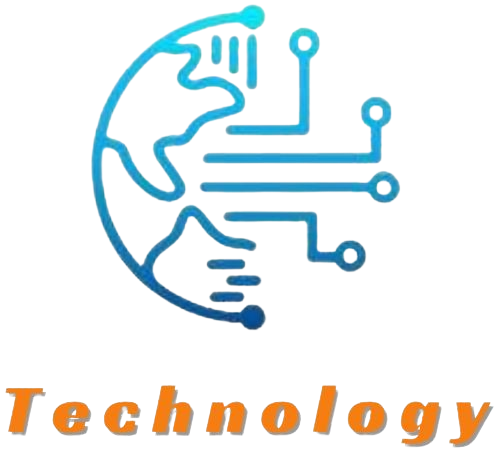Social media allows businesses to directly engage with customers. Platforms like Facebook and Twitter provide opportunities for brands to share content, promote products, and build relationships.
Over 3 billion people actively use social media worldwide. Do you know why is social media an important part of inbound marketing? This massive audience presents a major opportunity for brands to connect with potential customers. By strategically using platforms like Facebook and Instagram for inbound marketing businesses can drive significant website traffic.
Inbound marketing refers to tactics and strategies aimed at attracting customers organically without traditional advertisements. Social media platforms like Facebook and Twitter allow for real-time engagement with target audiences. By using social media for things like content sharing, and influencer collaborations.
How does Social Media relate to Inbound Marketing?
Social media platforms allow brands to directly engage with current and potential customers. Sites like Facebook, Twitter, and Instagram have billions of active users.
This massive audience presents an opportunity for inbound marketing. Brands can use social media for content distribution, driving website traffic, boosting brand awareness, and converting followers into leads.
Strategic use of platforms like YouTube and LinkedIn facilitates meaningful two-way interactions with audiences. In essence, social media facilitates core inbound activities like attraction, conversion, and delight. Leveraging these platforms is key for modern inbound strategies.
Best Practices for Social Media Inbound Marketing
Focus on creating high-quality, valuable content to share through social platforms. Engaging images, videos, and infographics tend to gain more traction. Post content regularly and consistently, but avoid overly promotional messaging.
Utilize targeted paid ads to expand reach. Build relationships with social media influencers to amplify brand exposure and credibility. Enable users to easily share content to expand organic visibility.
Closely monitor engagement metrics from each platform to refine posting strategies. Provide excellent customer service and facilitate conversations to convert followers into customers. The ultimate goals are driving website traffic, capturing leads, and boosting sales with inbound social media tactics.
Understanding Inbound Marketing
Inbound marketing refers to marketing activities that attract customers through relevant and helpful content. It differs from disruptive advertising and outreach. The goal is to earn attention and drive consumer action.
Inbound focuses on being found by search engines and building brand awareness organically. It leverages blogs, videos, eBooks, and other tools to grab interest. Social media facilitates the sharing of useful content to the right audiences.
Leads come to you on their timeline, so inbound requires patience and nurturing over time. The end goal is converting strangers into brand advocates and loyal customers through trust.
Benefits of Inbound Marketing
Inbound marketing refers to marketing activities that attract customers through relevant and helpful content. It differs from disruptive advertising and outreach. The goal is to earn attention and drive consumer action.
Inbound focuses on being found by search engines and building brand awareness organically. It leverages blogs, videos, eBooks, and other tools to grab interest. Social media facilitates the sharing of useful content to the right audiences.
Leads come to you on their timeline, so inbound requires patience and nurturing over time. The end goal is converting strangers into brand advocates and loyal customers through trust.
Enhanced Brand Visibility and Recognition
Brands today need strong online visibility to reach modern audiences and drive growth. Social media is an increasingly vital part of effective inbound marketing strategies.
Platforms like Facebook and Twitter provide opportunities to distribute valuable content, build online communities, and directly interact with target demographics interested in your brand.
As an important part of inbound marketing, leveraged social media allows for amplified brand visibility and recognition organically over time. By taking advantage of social media as a critical inbound channel, companies can expand their reach significantly.
Ultimately, having an inbound strategy that incorporates social media as an integral component facilitates enhanced visibility which is essential for modern brand success.
Targeted Audience Engagement and Relationship Building
Inbound marketing is focused on attracting customers by creating value rather than interrupting them. Social media is an extremely useful channel for targeted engagement.
Platforms like Twitter and LinkedIn enable direct conversations and meaningful interactions with potential customers. As an integral part of the inbound methodology, leveraged social media allows for targeted audience engagement and relationship building over time.
Strategic content and responsive interaction using social as an inbound component cultivate trust and affinity with brands. Done correctly, the social media aspect of an inbound strategy fosters improved lead generation and conversion rates.
Ultimately, social media as a core inbound marketing driver enables brands to successfully build ongoing engagement and relationships with clearly defined target audiences.
Cost-effectiveness and Higher ROI
Inbound marketing techniques aim to attract qualified traffic through relevant, valuable content. As an integral inbound component, social media done right offers strong ROI.
Platforms like YouTube and Facebook enable brands to reach massive audiences and distribute content at little cost. As an important part of the inbound methodology, social media provides extreme scale and efficiency advantages.
Strategically optimized profiles and ad campaigns further amplification and conversions from earned social content. Compared to traditional interruptive advertising, an inbound approach with integrated social leverages owned channels for significant cost savings.
Ultimately, by incorporating social organically into the inbound mix, brands gain more leads and customers from created assets – resulting in continued exposure over time and higher return on investment.
What is an Inbound Marketing Campaign?
An inbound campaign refers to strategic marketing activities focused on attracting customers through relevant, valuable content rather than disruptive ads. Quality content builds trust and converts strangers into brand advocates over time.
Social media is an important element of an impactful inbound approach. Platforms like Instagram and Twitter facilitate low-cost content distribution and conversations at scale.
As an integral inbound component, social media also enables audience development through partnerships with influencers in a niche.
Ultimately, an effective modern inbound campaign has social integration at its core to maximize reach and form authentic customer relationships based on trust – not pressure.
Components of an Inbound Marketing Campaign
| Component | Description |
| Content Creation | Leveraging platforms like Facebook and Twitter to distribute content and facilitate conversations to convert strangers into leads and customers. As an important part of the inbound methodology, integrated social media maximizes reach and enables scalable audience building over time. |
| Search Engine Optimization | Optimizing content and sites to improve ranking in organic search results. Key inbound component. |
| Social Media Marketing | Leveraging platforms like Facebook and Twitter to distribute content and facilitate conversations to convert strangers into leads and customers. As an important part of inbound methodology, integrated social media maximizes reach and enables scalable audience building over time. |
| Lead Nurturing | Using email, content, and conversations to develop deeper engagement with prospects not yet ready to purchase. |
| Analytics & Refinement | Continually improving efforts by monitoring performance through key metrics like open & click-through rates, conversions, ROI. |
FAQ’s
Why is social media important for inbound marketing?
Social media allows inbound marketers to distribute content and engage directly with their target audience to build awareness, trust, and relationships that drive conversions. The billions of active social users provide unprecedented reach.
What types of social media best lend themselves to inbound tactics?
Platforms like Facebook, Twitter, LinkedIn, Instagram, YouTube, Pinterest, and Snapchat enable sharing useful content, interacting through comments and messages, and ultimately converting followers into customers.
What kinds of inbound social media activities work best?
Posting educational and entertaining content, responding to followers, running both organic and paid targeted ads, engaging influencers, promoting offers and gated content, and monitoring engagement metrics all facilitate inbound success.
How can marketers measure the impact of their social media inbound marketing?
Track website traffic from social platforms, monitor engagement metrics like follows/shares/clicks, document content reach/impressions, listen for brand mentions, tally form submissions from social followers, and ultimately measure the number of closed sales influenced by social efforts.
Conclusion
Social media platforms provide a hugely valuable channel for inbound marketing efforts. Sites like Facebook, Instagram, and LinkedIn have over 3 billion regular users combined. This massive built-in audience gives marketers instant access to their target demographics. By posting valuable content, monitoring engagement analytics, responding to followers, and running strategic promotions – brands can cost-effectively build awareness, trust, and relationships with potential customers. Tactics like driving website traffic, capturing leads, and nudging followers toward conversions are all possible with proper social media integration.
As an essential component of the modern inbound methodology, social media enables relevant two-way conversations and impactful content sharing. Unlike disruptive traditional advertising, leveraged social platforms facilitate authentic and personalized interactions at scale. Brands focused on attracting and engaging clearly defined audiences should have social at the core of their inbound marketing mix. The payoff for consistent organic social efforts is expanded brand visibility, qualified website traffic, new lead generation, and increased sales over time through earned media, rather than paid placements.

